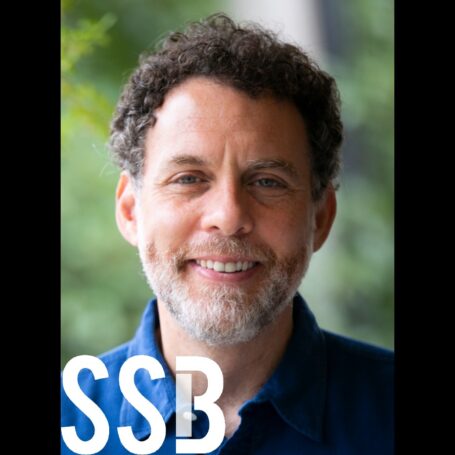Crafting the Best DEI Policies: Include Everyone and Include Evidence
As the U.S. becomes increasingly polarized, diversity, equity and inclusion – also known as DEI – efforts have been touted as a way to bridge social divides and promote a sense of belonging for everyone, especially for those who have been traditionally excluded or marginalized.
But in recent years, a backlash has set in, with many institutions defunding their diversity and inclusion efforts in response to pressure from workers, lawsuits and even state governments.
Ironically, critics say that DEI efforts fail to include diverse perspectives – for example, by emphasizing certain backgrounds while neglecting others. Some argue that these programs actually worsen the problems they’re intended to solve.

While it’s easy to dismiss the backlash as purely a result of bigotry – as not all criticisms of DEI are made in good faith – it’s important to consider how DEI efforts themselves can be made to be more inclusive, in order to garner the support necessary to help society as a whole progress.
The insights I share are drawn from my experience as a professor of educational leadership who has extensively researched and taught about workplace inclusion, as well as my time spent as a human resources professional dealing with these issues from an employer’s perspective. The bottom line is that true inclusion cannot occur when people continue to feel alienated.
To be clear, my proposed answer is not for employers to ignore identity entirely or take a “colorblind” approach – not least because that’s not what employees want. Instead, a better approach is for employers to be intentionally inclusive of people of all backgrounds, to allow everyone to feel a sense of belonging.
Building a better DEI training
Unfortunately, many of the most popular DEI efforts – for example, short, one-shot diversity training sessions – haven’t been found to be effective, at least not as they’re implemented. In other words, they haven’t been shown to improve workforce diversity, especially in leadership. In fact, they can sometimes even be counterproductive, reinforcing microaggression and bias instead of reducing them.
Research suggests these problems result from how programs are structured and implemented. These programs often prioritize achieving quick, symbolic victories – such as merely providing the training without consideration of its effectiveness or simply mandating the next round of hires be people from particular backgrounds – at the expense of tackling long-term, systemic issues that led to such problems in the first place. This allows bias-laden daily practices to continue unabated.
For example, it’s not uncommon for employers to set aside a few hours each year for workers to sit through a lecture-style diversity training. But research suggests this format often fails to change deeply rooted biases and behaviors, especially in the absence of systemic institutional change.
Instead, research suggests that diversity training should be collaborative and sustained to allow for ongoing dialogue, so people can honestly confront issues that often go unspoken. This strategy makes some intuitive sense: Different biased behaviors have different root causes, and each requires a differentiated response rather than a one-size-fits-all solution.
In contrast, mandatory training that takes place in an unsupportive environment can elicit resentment.
The value of shared understanding
Despite tensions revolving around DEI, most people would probably agree that workers should be treated fairly and given equal access to career opportunities – a foundational goal of DEI. But defining concepts such as fairness, inclusion and diversity often requires difficult conversations that are often not had.
The right framing can be a good place to start. Ideas such as inclusion can be framed in ways that speak to common root values, which encourages collaboration – or they can be framed politically, which can promote division and feelings of threat and defensiveness.
One powerful way to build mutual understanding is to provide opportunities for people to share their own experiences. When those who feel they have been discriminated against share their perspectives, others can begin to better empathize and understand the perspectives of others. From there, it’s easier for them to reimagine policies and structures that might be more inclusive of people who have been traditionally neglected.
To be effective, diversity efforts should not focus just on individual employees but also structural practices at the organizational level. For example, when people of diverse backgrounds have more opportunities to collaborate in working teams, research shows that bias can be reduced.
The business case for DEI
Criticism may be growing, but it would be a mistake for employers to pull back on their DEI efforts. Instead, they should focus on improving them. That’s because U.S. society is becoming increasingly diverse, and organizations must prepare and adapt.
Despite the backlash, the reality is many workers value DEI. Meanwhile, research indicates that workplaces with poor inclusion climates have higher turnover, which in turn creates high replacement and retraining costs for the employer. In the end, employers that fail to provide what workers want – inclusive work environments – will likely be less competitive.
And while some critics mistakenly believe a diverse workforce is a lower-quality workforce, research suggests that the opposite is true. That is, hiring “the best person for the job” doesn’t conflict with achieving diversity goals.
The benefits of workplace diversity have been empirically demonstrated across fields ranging from health care to education to business. More diversity has been linked with improvements in innovation, communication, organizational performance and profit. What’s more, a diverse workforce with diverse perspectives can provide better service to increasingly diverse customers.
Organizations shouldn’t back away from workplace DEI efforts. Rather, the research suggests, they should double down, using a more inclusive approach that emphasizes civility and dialogue – one aimed at finding common ground. Moving from an us-versus-them mentality toward a focus on empathy, support and connection can change hearts and minds.























































































